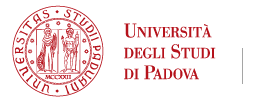
Progetto Photosynthesis
- Human Science Frontier Programme Grant
- Photosynthesis light utilization dynamics and ion fluxes: making the link
Summary
Successful acclimation of photosynthetic organisms to variable environments requires a tight management of source (light harvesting) and sink (CO2 assimilation) relationships. Photosynthetic organisms optimize photosynthesis in low light, where excitation energy is limiting CO2 fixation and minimize photo-oxidative damage in high light, dissipating excess photons harmiess. Despite extensive studies of these phenomena, the mechanism governing light utilization in plants is stili poorly understood. Our results pinpointing a K+ channel (TPK3) as an essential component of light biomass-conversion have pioneered a new research field (photosynthesis optimization by ion fìux). By counterbalancing I-T pumping with K+ flux, TPK3 modulates specific functions of the proton motive force in the light (non photochemical dissipation of excess light, electron flow efficiency), ultimately improving plant fitness. Very recently, other channels/exchangers have been proposed to play similar roles. Here, we propose to establish the rules governing ion modulation of photosynthesis using a comprehensive and integrative approach in model algae (C. reinhardtii, P. tricornutum), mosses (P. patens, M. polymorpha) and plants (A. thaliana). Complementary expertise in our team (electrophysiology, spectroscopy, bioinorganic chemistry and molecular genetics) will allow to identify putative chloroplast ion channels, generate down-regulated mutants, characterize their function in vitro (electrophysiology) and in vivo (using Stark spectroscopy) and collate their phenotype to ion dynamics in vivo. This will allow dissecting the complex regulation of light conversion into chemical energy. Focus on different phylogenetically relevant organisms (green algae, diatoms, mosses and vascular plants) is feasible due to expertise in their physiology and molecular biology in this consortium, and will provide essential insights into the evolution of photosynthesis regulation. Gathering four investigators in a structured network will enable a cutting-edge, interdisciplinary and integrative approach to answer fundamental biological questions, which no individual lab could solve on its own.
Partnership
- Prof.ssa Ildikò Szabò – PI – Department of Biology – University of Padua
- Dr. Giovanni Finazzi – Co-PI - Laboratoire de physiologie vegetale et cellulaire - CEA Grenoble France
- Prof. Toshiharu Shikanai – Co-PI – Department of Botany – University of Kyoto (Japan)
- Prof. Chris Chang – Co-PI- Department of Chemistry - University of California at Berkeley (USA)





